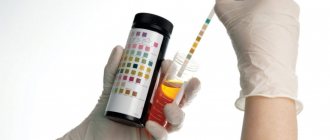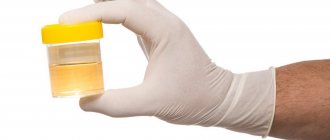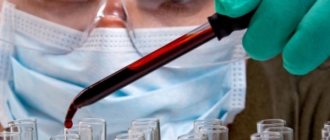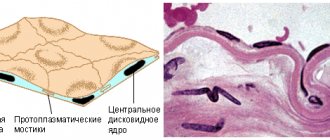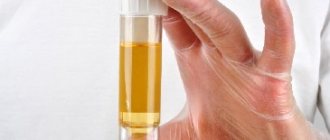If acetone is detected in the urine during a test, this may indicate many human diseases. This substance is normally found in urine in small quantities. It is classified as ketones - products of incomplete oxidation of fats and proteins.
Today acetonuria, i.e. An increased concentration of acetone in urine is a fairly common phenomenon, although previously it was extremely rare. What may be related to the presence of this substance in the urine, how it is diagnosed and treated - questions that concern patients who have been diagnosed with the presence of this component.
General information
Acetonuria is a phenomenon when acetone .
Initially, you need to understand what acetone is. So, acetone is ketone bodies, which are toxic. Ketone bodies are products of incomplete breakdown of proteins. It is important that this substance must be within acceptable limits. The permissible level in urine is 20-50 mg per day. However, most experts say that the acetone indicator should be zero.
Increased acetone in the urine in children and adults indicates a serious threat to the body. After all, the progression of this condition occurs very quickly, provoking disturbances of consciousness, the development of cerebral edema, disturbances in cardiac activity and breathing. This condition can even lead to death.
Acetonuria is a consequence of ketoacidosis ( acetonemia ). In this condition, ketone bodies are formed in the blood. If ketone bodies are present in the blood, they are excreted from the body through the kidneys - in the urine. Accordingly, if a laboratory analysis is carried out, this will be reflected in the results obtained. Acetonuria is not a disease or symptom, but a laboratory term. And acetonemia is a term that has clinical significance.
Currently, acetonuria is a fairly common occurrence, whereas in the past it was detected relatively rarely. Currently, acetone in the blood is sometimes detected even in healthy people due to the influence of a number of factors. Acetone also appears in the blood during serious illnesses - severe infections, diabetes and others. Below we will talk about the reasons why there is increased acetone in the urine in children and adults, and why does this figure continue to increase?
Diet
This is one of the common reasons for an increase in the amount of ketone elements. This is a mandatory point in complex treatment for children and adults. There are general dietary recommendations, which are presented in the table below:
| Authorized Products | Prohibited Products |
| Cereal porridge. | Soups with bone broth and meat. |
| Lots of liquid. | Sweet sour milk, fatty foods. |
| Still mineral water, dried fruit compote. | Sour fruits. |
| Fresh dishes or boiled, steamed. | Legumes. |
| Vegetable soups. | Tomatoes, eggplants, peppers, rhubarb, parsley, spinach and sorrel. |
| Biscuits. | Mushroom broths and mushrooms. |
| Mashed potatoes. | Chocolate and other cocoa products. |
| Baked apples, corn. | Industrially produced sauces. |
| Bananas, grapes. | Fast food, chips, crackers. |
| Walnuts. | Cakes, pastries. |
| Pasta. |
What are ketone bodies?
If the patient has ketonuria , what it is, the doctor will explain in detail. But in general, ketonuria is a condition in which a urine test reveals an increased content of ketone bodies. A common occurrence is ketonuria during pregnancy and in young children.
Ketone bodies are intermediate products that occur when pathological metabolic processes occur in the body. They are formed as waste products from glucose during the breakdown of fat.
The main source of energy is glucose, which is formed due to the breakdown of carbohydrates . Entering the body with food, they are easily absorbed.
The appearance of ketone bodies in the urine occurs due to a noticeable lack of carbohydrates. Therefore, it is very important that the diet is correct and does not contain a deficiency of substances that ensure the production of glucose.
Since the human body cannot exist without energy, a lack of glucose triggers the process of self-preservation, the essence of which is the breakdown of its own fats and proteins. Pathological processes of self-preservation are usually called gluconeogenesis. As a result of their triggering, toxic ketone bodies are formed. If a small amount of them is produced, then their oxidation in the tissues occurs in the body, and the person exhales them with air or they are excreted from the body in urine.
However, if ketones are released at a rate exceeding the rate of their elimination process, the following pathological reactions can occur in the body:
- damage to brain cells in large quantities;
- very severe dehydration ;
- the gastrointestinal mucosa is damaged, which provokes vomiting ;
- there is a violation of the acid-base state, which leads to an underestimation of blood pH, that is, the manifestation of metabolic acidosis ;
- Cardiovascular failure develops, possibly a coma .
Prevention
Urine should not contain large amounts of acetone, this indicates the development of abnormalities. To prevent them, it is necessary to carry out preventive measures that will help avoid the development of this disease or detect others in time. Doctors advise adhering to the following recommendations:
- Every year you need to undergo a routine examination by a specialist and have your urine tested.
- Every day you should drink at least 1.5 liters of liquid, and preferably 2 liters.
- Avoid physical inactivity; you need to give yourself moderate physical activity every day.
- Before starting a diet, be sure to consult a nutritionist. Poor nutrition often causes the growth of acetone in the urine.
- Symptoms of acetonuria develop when medications are taken incorrectly, so the course of treatment must be coordinated with a doctor.
- It is recommended to get rid of bad habits.
Symptoms of acetonuria
Wikipedia and other sources indicate that the first symptoms of acetonuria are the following:
- appetite disappears , which leads to the person refusing to eat and take fluids. Poisoning leads to nausea and prolonged vomiting after eating.
- I am concerned about spasmodic pain in the abdominal area, and the body temperature increases.
It is important for the patient to understand in a timely manner what this means and take the necessary measures. Otherwise, it should be taken into account that this condition worsens over time, and then the patient is bothered by the following symptoms:
- Poisoning and dehydration - the amount of fluid that is released from the body sharply decreases, the skin turns pale and dry, and characteristic redness of the cheeks appears. The tongue becomes dry and coated, the patient suffers from weakness.
- The central nervous system is affected . Initially, the patient is excited, but very quickly he becomes lethargic and sleepy. In this case, drowsiness manifests itself constantly. If treatment is not promptly taken, the person may fall into a coma. convulsions may occur .
- A characteristic odor appears - not only does the patient’s urine smell like acetone, but also the vomit and other secreted liquid. The reasons why urine smells like acetone are related specifically to acetonuria. At the same time, the smell of acetone in the urine can be either weak or very pronounced - how intense the smell of acetone in the urine of women, men or children does not indicate the level of severity of the pathology.
- The liver is enlarged , which is determined by ultrasound; a number of changes are noted in laboratory tests; The transcript of the blood test shows an increase in leukocytes and ESR . Acetonuria is noted. A biochemical study determines a decrease in chlorides and glucose, an increase in lipoproteins and cholesterol .
The first signs of this condition can be determined independently. But why women or men exhibit such signs will be explained by a doctor who will confirm the diagnosis.
Clinical manifestations of acetonuria
This pathology is accompanied by pronounced symptoms that are simply impossible not to notice, so everyone can make a diagnosis on their own.
Characteristic signs of acetonuria are:
- a sharp unpleasant odor from the mouth and in the urine, which increases significantly when consuming foods rich in protein;
- elevated temperature, which cannot be brought down even with the help of antipyretic medications;
- change in skin color;
- severe headache spreading throughout the head;
- acute cramps in the abdominal area;
- poor appetite or its complete absence;
- general weakness;
- sudden mood changes;
- drowsiness;
- indifference to everything that happens;
- gagging at every meal.
Almost always, these symptoms appear simultaneously, so if you notice them, you should immediately go to the hospital to take a urine test. Acetone, the rate of which will almost always be increased, can lead to severe poisoning of the body, as a result of which many irreversible processes and pathologies can develop.
Acetone test strip
The pharmaceutical industry offers special test strips that can be used at home to find out whether there is acetone in the urine. These are strips Ketofan , Ketoglyuk 1 , Uriket . The price of test strips for acetone in urine is within 200 rubles. for 50 pcs.
To find out the current status, you need to place a new test strip in a container with urine. If a pathology due to which acetone is produced occurs, the tester becomes pink (in the case of a small amount of ketone bodies) or purple-red (if there is severe acetonuria).
Basic laboratory research methods
To determine the level of saturated ketones in the human body, several types of tests are used in modern medicine.
Among them, the most effective and frequently prescribed are the following:
- Express test. With its help, you can do the analysis yourself at home. To do this, you need to buy a special strip at the pharmacy, which is immersed in urine for a few seconds. After just a few minutes, the result will be ready. Indications are determined based on the color scale given on the packaging for the express test.
- General urine analysis. It is performed in a laboratory and provides detailed information about the level of acetone and the chemical composition of the urine.
- Collection of daily urine. This diagnostic method is the most informative, but also very difficult. It has a high cost, so it is prescribed in very rare cases.
The best option is a general urine test, since it can be done at any government medical institution completely free of charge. At the same time, it allows you to identify acetonuria at the earliest stages and begin its treatment.
Why do ketone bodies appear in urine?
A person should immediately consult a doctor if protein breakdown occurs in large quantities and the acetone norm is significantly exceeded. This is evidenced by the presence of acetone not only in urine, but also in vomit, as well as in saliva.
The most common causes of ketone bodies in urine are:
- Ketone bodies in the urine of a child and an adult appear in the moderate and severe stages of diabetes mellitus . As a rule, this occurs with type 1 or type 2 diabetes, which lasts for a long time. Therefore, if ketones are detected in the urine of a child or an adult, it is necessary to determine the blood sugar level. At the stage of decompensation of diabetes mellitus, a large amount of carbohydrates is lost. In addition, one of the signs of diabetic coma is acetonuria. However, it is impossible to predict the onset of coma based on the degree of its severity, since it can occur with a small amount of acetone or not occur if its amount and the amount of acetoacetic acid in the urine are quite large.
- If a person’s diet is dominated by protein foods and fatty foods. If ketone bodies appear in the urine, what this means can “explain” a person’s dietary habits. With a lack of carbohydrates, the breakdown of fats and proteins becomes difficult. As a result, pathological changes occur.
- Acetone appears as a result of long and strict diets . Sometimes those who ask doctors: ketones in urine - what does this mean, should reconsider their attitude towards various diets. Indeed, as a result of fasting or strict diets, acidosis manifests itself, that is, an impaired acid-base balance.
- Ketone bodies in urine during pregnancy appear in severe toxicosis . If ketones are detected in the urine during pregnancy, you should immediately tell your doctor about this.
- Enzyme deficiency, which causes disruption of the digestion of carbohydrates.
- Injuries, stress , physical and mental overload, exacerbation of chronic diseases, the period after surgical interventions - that is, those conditions in which glucose consumption increases.
- Intestinal infections or poisoning, in which acidosis develops due to vomiting and diarrhea .
- A number of serious diseases - stomach cancer, narrowing of the pylorus, stenosis of the esophagus, cachexia and severe anemia.
- Infectious diseases in which fever .
- Alcohol poisoning, in which a person suffers from vomiting and diarrhea.
- Mental illnesses.
- Severe hypothermia, excessive physical exertion.
- Oncological diseases, the period of their treatment.
Reasons for the appearance of acetone
If you smell a strong smell of urine in a woman, the reasons should be sought in impaired metabolism. Failures can be explained by both complex inflammatory processes and less alarming circumstances.
Let's name the main reasons for bad urine odor in women:
- diabetes;
- long fasting, poor diet;
- increased physical activity;
- alcohol intoxication;
- food poisoning;
- severe and prolonged stress;
- viral infections that are accompanied by high temperature and fever;
- oncological formations in the gastrointestinal tract.
If the strong sour smell disappears after about 2-4 days, there is nothing to worry about. The acid-base balance returned to normal.
For example, if acetonuria is caused by excessive physical fatigue or stress, simply resting is enough. If the appearance of acetone is associated with a very long diet or a sharp lack of carbohydrates in the body, you just need to adjust the daily diet. Elderly people often suffer from ketonuria.
The body of older people reacts with acetone to elevated body temperature and any form of intoxication. With the elimination of this problem, the situation with acetone is also solved. If we are talking about food or alcohol poisoning, we need to cleanse the body, and the acid balance will return to normal along with the normalization of the gastrointestinal tract.
We need to take acetonuria, which is caused by inflammatory processes, much more seriously. Only a doctor can determine the exact cause of the problem by conducting additional laboratory tests of blood and urine. Therefore, if stress, strain, diets are not your case, immediately go to the doctor.
Acetone in the urine of a child
Ketoacidosis not associated with diabetes occurs in most cases in children under 12 years of age. The reasons for acetone in the urine of a child are related to the physiology of the growing organism. We are talking about the following features:
- A child's body does not have such large reserves of glucose in the form of glycogen as an adult's body.
- The reasons for acetone in children may be due to the fact that children move a lot and, accordingly, waste energy. Therefore, severe overload and eating disorders affect health more dramatically.
- Since the formation of the pancreas occurs in children under 12 years of age, due to this natural reason, ketone bodies and, accordingly, the smell of acetone may appear in liquids. With a lack of enzymes that are needed to digest food, putrefactive processes begin. As a result, fermentation products enter the blood and kidneys, which is the answer to the question of why the smell of acetone is felt in liquids.
In general, the reasons for the appearance of acetone, like the reasons for sugar in the urine, depend on the same factors in both children and adults. As a rule, an increase in the amount of ketone bodies is associated with a diet that is dominated by fatty foods and junk food. Parents should closely monitor what their baby eats, as poor nutrition directly affects the child’s health.
Treatment methods
Why is acetone dangerous? Is it necessary to treat this condition? In clinical cases that are not associated with the development of a condition that poses a threat to the patient’s health, therapeutic measures may only include procedures aimed at cleansing the body, as well as following a fairly strict diet. If acetone is present in urine in significant quantities, mandatory hospitalization of the patient is required, followed by detoxification treatment.
Medications
Treatment of acetonuria involves the use of medications designed to relieve the symptomatic manifestations of the pathology, as well as remove toxic compounds from the body. It should be noted that this substance is formed mainly against the background of the presence of any diseases; therefore, to normalize the condition, therapy for the underlying disease is necessary.
To directly eliminate the consequences of ketonuria, the following drugs can be used:
- White or black activated carbon. They effectively cleanse the body by absorption and prevent the entry of toxic substances into the systemic bloodstream.
- Regidron, Polysorb. They have properties that promote detoxification of the body and normalize the state of microflora and increase immune strength.
- Cerucal. In some cases, acetonuria is accompanied by attacks of severe vomiting. To normalize the condition and prevent severe dehydration, this particular drug is used.
As additional medications that are necessary against the background of the appearance of acetone in the urine, medications with saline solution administered intravenously and intended for detoxification procedures can be used.
Diet therapy
It must be emphasized that such a phenomenon as the appearance of ketone bodies and acetoacetic acid in urine occurs mainly due to violation of the basic rules of a balanced diet, consumption of a large number of foods, the composition of which is rich in carbohydrates and proteins. Accordingly, to normalize the condition and prevent negative consequences, it is necessary to follow a fairly strict diet. The basic principles of therapeutic nutrition are:
- First of all, you should drink plenty of fluids. Why? Its lack in the body leads to dehydration and metabolic disorders, resulting in the development of acetonuria. To replenish moisture deficiency, as well as to remove toxins, you need to drink various compotes, for example, prepared from fresh berries or dried fruits. Sweeteners should not be added to such drinks.
- You can eat meat products, but you should choose only lean varieties. In addition, it is advisable to eat fish and various types of seafood.
- It is important to exclude broths, fatty meats, smoked meats, canned food, spices and herbs completely. You should not drink alcohol, strong black tea, or coffee.
- To effectively remove various toxins from the body, you should include in your diet as many fresh vegetables, berries, and fruits as possible, as well as those that have undergone short heat treatment.
It must be emphasized that there is currently an increasing trend in the detection of acetonuria in children. According to qualified specialists, this is largely due to incorrect diet and nutritional patterns. The predominance of meat, semi-finished products, sweets in a child’s diet and the lack of necessary vegetables, fruits, and fermented milk products leads to disruption of metabolic processes and, as a consequence, the formation of acetone in urine.
Folk remedies
If the amount of acetone in the urine is not significant, alternative medicine will help normalize the condition. However, you should not abuse them, and also remember that their use is permissible only after consultation with a specialist. The following recipes are most often practiced at home:
- Salt enema. This method is effective if one of the reasons for the appearance of ketone bodies in urine is an infectious process affecting the organs of the intestinal tract. To carry out this type of procedure, you should dissolve a large spoonful of sea salt or the most common table salt in a liter of warm water, and then do an enema. Carrying out this procedure for more than three days is strictly not recommended, as this can lead to disruption of the microflora.
- Chamomile decoction. In order to prepare a remedy that will help cleanse the body, remove toxic compounds, and also have a calming effect, it is recommended to brew two tablespoons of chamomile inflorescences with half a liter of boiling water, and then infuse the drink for one to two hours. When the decoction is ready, you need to divide it into five servings, add a little water to each and drink at equal intervals.
As mentioned above, in the overwhelming majority of clinical cases, acetonuria is a consequence of a violation of the basic rules of nutrition. To prevent the development of such a pathological condition, timely attention should be paid to the usual diet, making the necessary adjustments to it. For example, it is advisable to give up excessively sweet, fatty, heavy, salty foods, sausages, processed foods, baked goods, and chocolate. The use of alcohol and strong medications should be avoided unless their use is vital.
To stimulate metabolic processes, cleanse from waste and toxins, it is necessary to consume the optimal amount of liquid, include vegetables, grains, legumes, cereals, fruits, and lactic acid products in the menu. These rules are especially important when it comes to feeding a child. Timely adoption of preventive measures will help protect your health and prevent a lot of negative consequences.
Why is acetone in urine dangerous during pregnancy?
Every expectant mother should understand that the presence of acetone in the urine indicates pathology and the need for immediate hospitalization. The most common causes of acetone in the urine in pregnant women are manifestations of toxicosis, in which the pregnant woman suffers from severe and regular bouts of vomiting. This leads to dehydration, resulting in the formation of acetone in the urine. Therefore, it is important to act in a timely manner to overcome attacks of nausea with the help of a doctor. If, during toxicosis, the smell of ammonia appears in the urine of women, you should immediately tell your doctor about it.
It is very important to eat right during pregnancy, because eating disorders can also lead to deterioration in health. A woman should not eat a lot of fatty and sweet foods, despite the fact that some expectant mothers are “craved” for such foods.
You shouldn’t go to the other extreme and eat very little for fear of gaining weight. If the expectant mother limits herself to food, this can lead to the development of acetonemia. During pregnancy, split meals are recommended. You need to eat in small portions, while consuming the maximum amount of food that is healthy for the body.
The main signs of acetonuria in pregnant women
It is much more difficult for expectant mothers to independently determine the increased level of acetone in the body due to toxicosis, which in itself has pronounced symptoms.
To avoid causing a problem, special attention should be paid to the following signs:
- increased sweating;
- excessive fatigue;
- constant migraines localized throughout the skull;
- dizziness;
- bad breath;
- severe pain in the abdominal region and pelvis;
- intense thirst that cannot be quenched.
If you notice such manifestations, then you should not ignore them. You should immediately consult a doctor and undergo the necessary tests.
How does ketonuria manifest?
Ketonuria / acetonuria is a pathological condition of the human body, characterized by the appearance of ketone bodies, accompanied by the smell of acetone in the urine. Every day, human kidneys pass through up to 1,500 liters of blood. Liquid passes through the blood vessels of the urinary system about 300 times, while being cleansed of unnecessary waste products.
The capillaries of the renal corpuscles work as a special filter; they retain large particles and allow amino acids, salts, and water to pass through. This is how the first urine is formed.
After this, the blood passes through the tubular system of the kidneys, where some of the filtered compounds enter it and the process of reabsorption of substances takes place. And the remaining substances that are unnecessary for a person exit through the ureters into the bladder and are excreted through the urethra. This is secondary urine.
A strong odor of acetone in urine most likely indicates pathology. It is typical for adults, children, women and men. Pregnant women and children are most susceptible to it.
How to remove acetone from the body?
To remove acetone you must first:
- Control blood sugar levels. It is best to measure your sugar level every three hours and inject insulin at 1-3 units at the same interval. This is important because when acetone is present in the body, blood sugar levels rise even without eating.
- Maintain a drinking regime - drink as much as possible.
- Eliminate fatty and high-carbohydrate foods from your diet.
The diet should be adjusted as follows:
| Not recommended | Recommended |
| Lard, fatty meat | Vegetables, greens, fruits |
| By-products | A small amount of honey and homemade jam |
| Fat broths | Porridge |
| Pickled products | Vegetable broth |
| Fat sour cream | Biscuits, crackers |
| Chocolate, coffee, cocoa | Weak tea, jelly, compote |
| Citrus |
In addition, mineral water with lemon (1 lemon per 1.5 liters of mineral water), a tablespoon of honey (if blood sugar is normal), water with soda (1 tablespoon of soda per 1 liter of water) can help in removing acetone.
Drug treatment consists of equalizing the acid-base balance in the body:
- Oral rehydration with Regidron and Oralit solutions. If the body is severely dehydrated, droppers of Rheosorbilact, 5-10% glucose solution with insulin, and Ringer's solution are prescribed. Xylate is also used, which slows down the formation of acetone and increases its absorption by the liver.
- To stop vomiting, Osetron is prescribed; it can be injected every 5-6 hours.
- Glutargin, Ursofalk, Betargin are used to support the liver.
- For rapid absorption of acetone from the intestine, absorbents such as activated carbon, Enterosgel, Atoxyl are prescribed.
After the patient’s condition is normalized, treatment of the cause of the increased level of acetone in the urine begins. Treatment depends on the pathogenesis of the disease. Competent and timely treatment stops ketogenesis and helps remove remaining acetone from the body.
Ketonuria, its varieties
If the analysis shows a high concentration of ketone bodies in the urine, what does this mean?
Previously mentioned: ketone present in urine - an increase in acetone concentration for various reasons. Doctors use different classifications of ketonuria, depending on the causes that caused it.
There is a division into two types:
- Primary ketonuria.
- Secondary variety.
The first group includes conditions when glucose deficiency is caused by disturbances in the mechanisms of its normal metabolism:
- diabetes mellitus in a child or adult;
- Itsenko-Cushing pathology;
- thyrotoxicosis syndrome.
Cushing's disorder, along with diabetes, triggers a biological mechanism for the utilization of fats and the formation of ketones due to the body's inability to use carbohydrate reserves, even if they are available. In patients with thyrotoxicosis, carbohydrates are consumed extremely quickly; their intake from food does not have time to compensate for the consumption, which causes a deficiency. Regardless of the initial cause, cells experience carbohydrate starvation and begin to search for alternative nutrition, replenishing energy reserves from fat cells.
The secondary variety is not a separate pathology; it serves as a symptom of certain painful conditions.
The main reasons that cause secondary “acetones in the urine” are:
- diseases of dysentery;
- fasting;
- following a protein diet;
- traumatic brain injury;
- various infections;
- physical stress.
It is also possible that this type of pathology may appear during pregnancy.
Another classification of ketosis has been accepted:
- Diabetic ketosis.
- Non-diabetic form.
- Ketosis is of physiological origin.
The pathology of the latter type is caused by a number of temporary phenomena that arose under the influence of external factors.
Why does it develop:
- hunger, malnutrition;
- high protein and low carbohydrate diet;
- long hard work.
If the cause is eliminated, ketones in the urine quickly return to normal.
Typical symptoms:
- urine acquires the smell characteristic of acetone;
- it is also felt in the patient’s breathing;
- the above signs of acetone intoxication are observed.
The cause of the diabetic disorder was stated above - it is the inability to utilize glucose.
The non-diabetic variety includes, for example, acetonemic childhood syndrome, which manifests itself when:
- infectious lesions of the body;
- diet with a predominance of fatty foods;
- irregular diet.
A patient in this condition experiences vomiting from time to time, alternating with relatively normal health.
